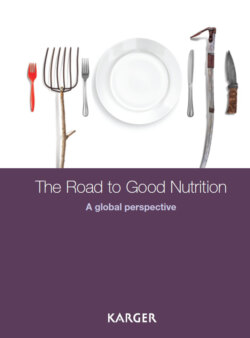Читать книгу The Road to Good Nutrition - Группа авторов - Страница 117
На сайте Литреса книга снята с продажи.
Linkages between food and nutrition security
ОглавлениеWFP Food and Nutrition Security Conceptual Framework (based on UNICEF conceptual framework for causes of malnutrition and DfID sustainable livelihoods framework). Reprinted with permission from WFP (2009) Comprehensive Food and Security Vulnerability Analysis Guidelines, Rome, Italy: WFP Available from www.wfp.org
Many global, national and local factors compromise the choices that poor populations have regarding their food consumption and diets. These include global changes in the food systems such as food and oil price volatility, climate change and resulting water shortages, and natural disasters affecting agriculture productivity, as well as conflicts and emergencies. At the local level, bad harvests, poor agricultural and husbandry practices, inappropriate procedures for the packaging and storage of food, and inadequate distribution mechanisms affect poor farmers’ food production and income, as well as their purchasing power. Food and nutrition insecurity are the result of inequity.
Most vulnerable of all are infants and young children during their first two years of life, and women when they are pregnant or breastfeeding. The vulnerability of these two groups comes from the fact that they have very high requirements for essential nutrients (e.g. vitamin A, iron, zinc, iodine, etc.) during these periods. For children, these nutrients are necessary for them to grow and for their brain to develop; for pregnant women, they are necessary because they have to provide extra calories and nutrients to their growing fetus; and for lactating mothers, they are necessary because the mothers are producing breast milk, and this requires consuming extra calories and micronutrients so that they can produce enough milk and for the milk to be of adequate quality.
The critical importance of this period (pregnancy, lactation and first two years of a child’s life), which is now referred to as the “First 1,000 Days” from conception to the two years of age, was made clear in a groundbreaking piece of research published by The Lancet Journal in 2008 and further emphasized in a new Series on Maternal and Child Nutrition published in the same journal in 2013. Both series highlight that not only is this 1,000-day period the time when mothers and children are most at risk of malnutrition, but that it is also the period when they can most benefit from interventions to prevent the negative consequences of malnutrition. In fact, what happens during the first 1,000 days determines the future of an individual, and nutritional damage that happens during this period is largely irreversible. Children undernourished during this period are shown to have delays in mental development, are less likely to perform well and to stay in school, have less skilled jobs and lower income in adulthood, and are at increased risk of developing problems of overweight and obesity and other chronic diseases such as heart diseases, diabetes and some types of cancers in adulthood.
“Food security exists when all people, at all times, have physical and economic access to sufficient safe and nutritious food that meets their dietary needs and food preferences for an active and healthy life.”
-1996 World Food Summit
Mother working in agriculture (with child)
Source: One Acre Fund
